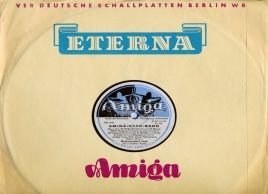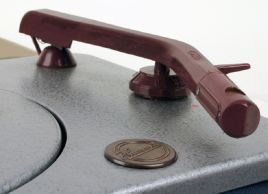Design
A post war Phono-Pioneer from Dresden capitulated
(27 Feb 2015)
Seventy years ago, right after the end of the war in 1945, the Dresdner electrical engineer Heinz Hummel launched his own small business. Using stock material of the German Armed Forces, other suitable material and his improvisation skills, he created initially a flashlight out of a hand dynamo-drive and later a record player under the brand name “Dynamos”. People started to enjoy listening to music again. In the first year of the GDR the disc production (at the beginning mainly shellac discs) increased speedly, and especially the demand of portable music players in “suitcase” boomed.
In 1955 Hummel applied for a licence at the East Berlin office for Inventions and Patents and he participated as a small provider, named “Hummel”, to a fair in Leipzig. He presented not only new technical solutions, as the automatic record changer, but also his own special design-style for product details. In this way, he stood out as the main producer of the GDR in the field.
Heinz Hummel became more and more successfull, but the state economic institutions became suspicious. They recommended him not to compete with state-owned enterprises anymore. They asked him voluntarily let his enterprise to be “nationally-owned”. Hummel knew, what a “no” could have meant: forced nationalisation and consequently, the end of the freedom to put his creative business ideas into practice. So in 1958, he moved with his family and his patent to West Germany. Exactly like a lot of other masterminds who wanted to do something innovative.
Photos and Text: Günter Höhne
(Translation: Thea Prini)


